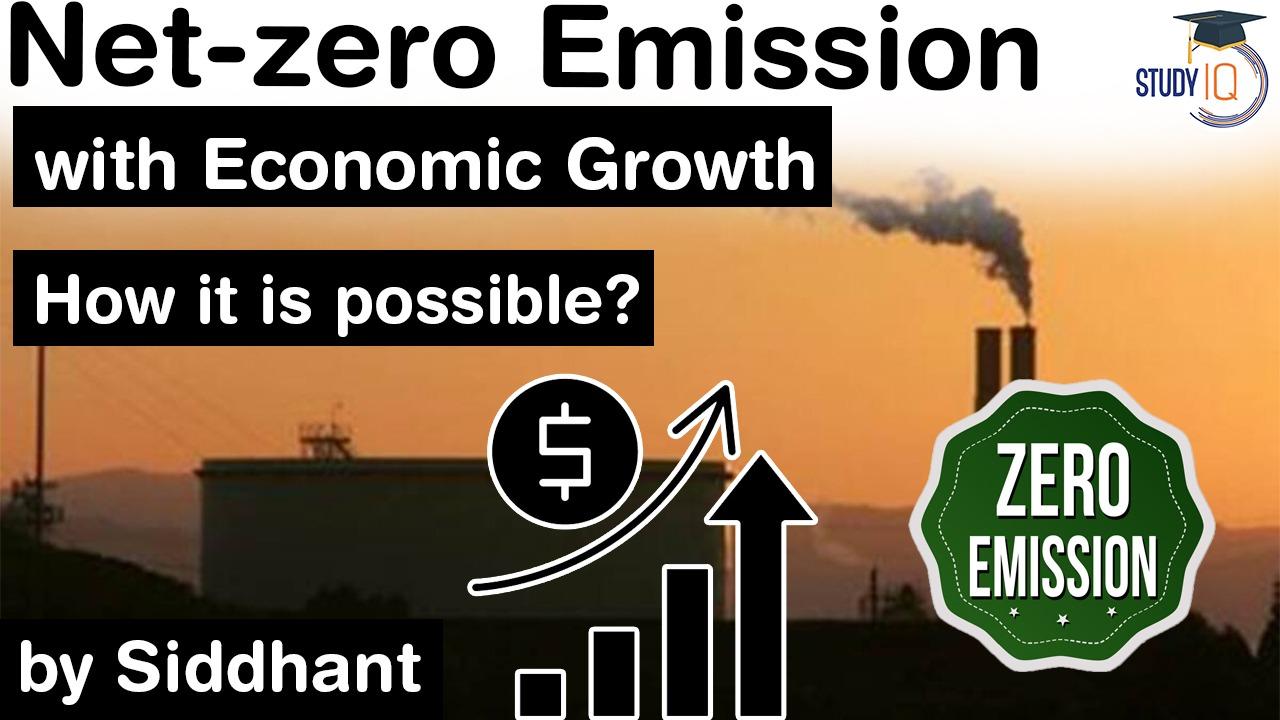Table of Contents
NET ZERO EMISSIONS
- Recently 58 countries announced net-zero emission targets. In the next 30 years, they aim to reduce their emissions of climate change-causing carbon dioxide and other GHGs, and remove what they do emit through planting trees or advanced technologies.
- Together these countries account for more than half the world’s current GHG emissions.
ACTIONS
- Our analysis shows that actions to reduce emissions in different sectors could be the foundation of a stronger economy and a healthier population. Most of India’s thermal power plants use scarce freshwater for cooling. As India moves to cleaner sources of electricity, water consumption by power plants will decrease from more than 2.5 billion cubic metres per year to less than 1 billion cubic metres per year in 2050. Actions to reduce carbon dioxide will also reduce other pollution.
ACTIONS
- A strong set of climate actions across multiple sectors can generate 24 million jobs in just 15 years.
- New studies show the daunting scale of the net zero challenge for our country
CONTRIBUTIONS
- Big contributions can come by commercially producing hydrogen from electrolysis rather than fossil fuels, and if we retire existing coal power plants earlier than scheduled.
- There is considerable scope to improve energy efficiency in large industries, and their supply chains of MSMEs which have the potential to save energy but lack capital.
POLICIES
- Such policies would lead to significant fuel savings and dramatically reduce the country’s crude oil import bill in the long run. The catch is that 25 per cent of the Centre’s tax revenue comes from the energy sector, so weaning away from fossil fuels will also deplete the government’s coffers. One way to offset this loss is through a carbon tax on industry, slowly phased in from a small amount roughly equivalent to the existing coal cess (or GST compensation cess) to reach Rs 2,500 per tonne of carbon dioxide by the middle of the century.
SOLUTIONS
- We must also prepare for the fact that job gains might not occur in the same locations as job losses.
- Women, whose participation in the workforce has been harder hit in the pandemic, may not easily be able to access certain new jobs.
- Most new jobs are expected to be non-unionised, often lacking safety nets.
FLATTENING THE CURVE
- Flattening the emissions curve will not happen by itself. But the important thing is that many of the needed policies are already underway. They need to be accelerated with investments of finance and technology. A net-zero emissions future need not be a zero-sum game. Strong environmental policies can create prosperity and well-being. With imaginative policies, robust institutions, and international finance, India will be able to declare its freedom from polluting fossil fuels in the hundredth year of its independence.
Latest Burning Issues | Free PDF






















 WhatsApp
WhatsApp